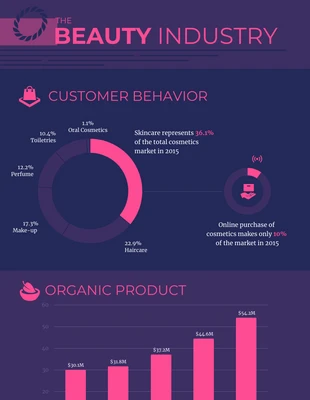Unlock the secret to beauty industry success with SEO: Discover how to skyrocket your business in 6 simple steps!

Image courtesy of Pixabay via Pexels
Table of Contents
In today’s hyper-competitive beauty industry, it’s not just about providing exceptional services. To thrive and grow, beauty businesses need to have a strong online presence and an effective marketing strategy. One of the most powerful tools in the digital marketing toolbox is search engine optimization (SEO). In this blog post, we will explore the ins and outs of SEO in the beauty industry and provide you with valuable tips and tricks to boost your online visibility and attract more customers.
Understanding the Beauty Industry
Before we dive into the world of SEO, let’s take a moment to understand the unique dynamics of the beauty industry. With its ever-growing market size and diverse range of sectors, including hair salons, nail salons, makeup artists, and more, the beauty industry has become a highly competitive market. This means that creating an effective marketing strategy is crucial to stand out among competitors and attract your target audience.
Why SEO Matters for Beauty Businesses
SEO is the practice of optimizing your website and online content to rank higher in search engine result pages (SERPs). In other words, SEO helps your beauty business be more visible to potential customers who are actively searching for the services you offer.
Imagine a potential customer searching for “best hair salons near me” or “affordable makeup artists in my area.” If your beauty business appears on the first page of search results, you have a higher chance of gaining that customer’s attention and winning their business. This is where SEO comes into play.
Optimizing Your Website for SEO
When it comes to SEO for beauty businesses, optimizing your website is a crucial first step. Here are a few tips to get you started:

Image courtesy of digitalagencynetwork.com via Google Images
1. Relevant Keywords:
Identify the keywords and phrases that your target audience is most likely to search for. For example, if you own a hair salon, relevant keywords might include “hair salon,” “haircuts,” “hairstyling,” and “hair color.”
2. On-Page Optimization:
Place these keywords strategically throughout your website, including in page titles, meta descriptions, headers, and within the content itself. However, be careful not to overstuff keywords, as it can negatively impact your rankings.
3. Quality Content:
Create informative and engaging content that showcases your expertise and value. This could include blog posts, tutorial videos, or client testimonials. By providing high-quality content, you not only attract organic traffic but also establish yourself as an industry authority.
The Power of Local SEO
For many beauty businesses, targeting a local audience is crucial. Local SEO focuses on optimizing your online presence to appear in local search results. Here are a few pointers:
1. Google My Business:
Create and optimize your Google My Business profile. This includes providing accurate business information, such as your address, phone number, and operating hours. Encourage customers to leave reviews, as positive reviews can significantly boost your visibility.
2. Local Listings:
Submit your business to local directories, such as Yelp and Yellow Pages. Make sure your information is consistent across all platforms to build trust with both search engines and potential customers.
3. Location-Specific Keywords:
Include location-specific keywords in your website content, such as “hair salon in [your city]” or “nail salon near [your location].” This helps search engines understand your geographical relevance and improves your chances of appearing in local search results.
The Importance of Backlinks
In addition to optimizing your website, building high-quality backlinks is another essential aspect of SEO for beauty businesses. Backlinks are links from other websites that direct users to your website. Here’s why they matter:

Image courtesy of venngage.com via Google Images
1. Authority and Trust:
Search engines consider backlinks from reputable and authoritative websites as a vote of confidence in your content or services. This can significantly boost your rankings and visibility in search results.
2. Guest Blogging:
Reach out to influential bloggers or industry publications and offer to contribute guest posts. In exchange, you can include a backlink to your website. This not only drives traffic but also improves your website’s authority.
3. Networking and Collaboration:
Build relationships with relevant businesses or professionals in the beauty industry. Partnering with them on joint marketing efforts, such as hosting events or offering discounts, can lead to more backlinks and increased exposure for your beauty business.
Measuring and Analyzing SEO Efforts
Lastly, it’s crucial to measure and analyze the results of your SEO efforts regularly. This helps you identify what’s working and what needs improvement. Here’s how to do it:
1. Google Analytics:
Set up Google Analytics on your website to track various metrics, including website traffic, bounce rates, and conversion rates. This data provides valuable insights into how users are engaging with your website and whether your SEO strategies are driving desired results.
2. Ranking Reports:
Regularly monitor your website’s search engine rankings for target keywords. This can be done using free tools like Google Search Console or paid SEO tools. By keeping an eye on your rankings, you can make informed decisions about adjusting your SEO strategies if needed.
Conclusion
SEO is a powerful tool that can help beauty businesses boost their online visibility and attract more customers. By implementing the tips and tricks discussed in this blog post, you can optimize your website, improve your local SEO, build high-quality backlinks, and measure your SEO efforts effectively. Remember, SEO is an ongoing process, so continuously monitor and adjust your strategies to stay ahead in the ever-evolving beauty industry.